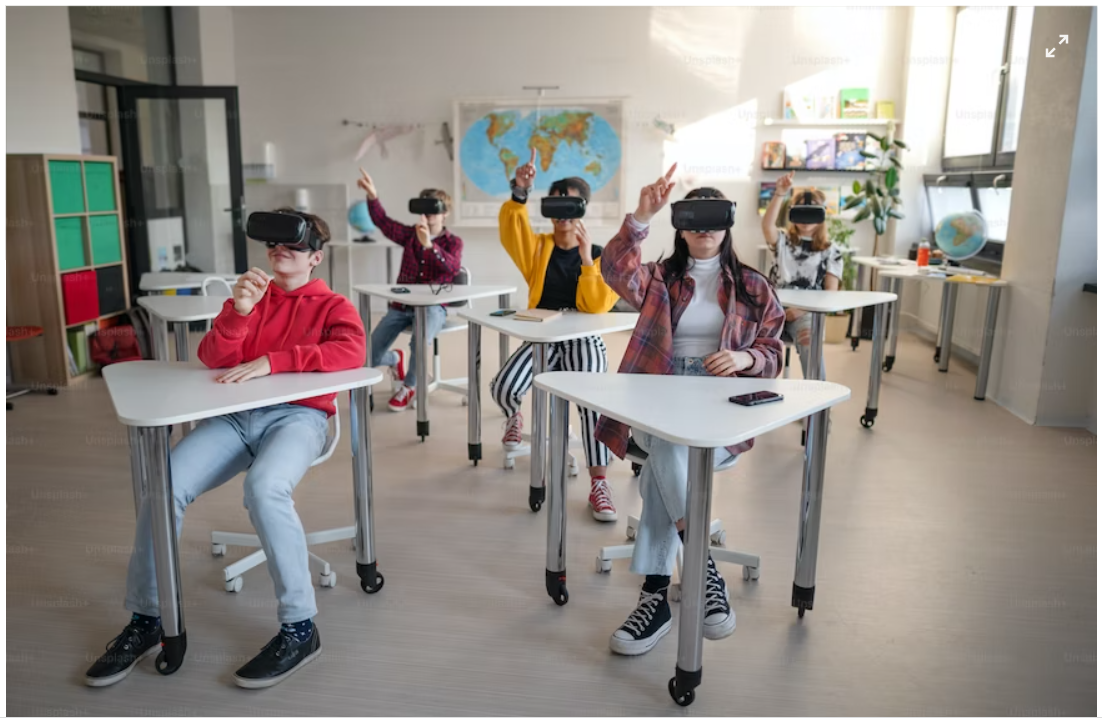Virtual reality has many uses and most of the common ones are in the entertainment sector. As more applications are being made of this technology, one area of use where the impact is or can be most profound is in the education sector. This is because it can be used to narrow existing gaps that have been a challenge for many years.
“Everybody is a genius. But if you judge a fish by its ability to climb a tree, it will live its whole life believing that it is stupid.” Albert Einstein is credited, rightly or otherwise, with this famous quote that seeks to point out that everyone is smart and unique in their own way.
However, with the standardization of tests in learning institutions all over the world, many children are left feeling that they are not as smart when they do not pass exams. But why is this? There are many reasons that affect the performance of students in learning institutions. But we will focus on resources and how technology can help to bridge that gap. For starters, resources play a great role in learning outcomes. Children from affluent families and those from low income families do not have access to the same resources and hence there will be inequality in learning.
This is an area where technology can help bridge the gap. One way of doing this is through virtual reality enhancement in the school system.
Theory vs practice
While children from affluent families have access to all the material that they need to advance their knowledge and interests, those from humble backgrounds do not have that luxury. They have to make do with what is available.
A critical area where there might be a gap is in theory vs practice. This is because certain practical sessions might be expensive for their schools to provide. This could be in the form of latest industry tools, school trips and academic visits or even good and motivated teachers.
Technology can plug this hole by allowing those from humble backgrounds to access cutting edge info from top instructors without traveling far or spending a fortune to get it. They can also make trips virtually instead of expensive physical travel.
Individualized learning
Everyone is unique in their own way and education needs to be approached from this angle. But this is easier said than done because certain schools do not have the resources to employ adequate numbers of teachers who can give students individualized attention and learning schedules as well as follow ups to ensure that no child is left behind.
Virtual reality can help students learn at their own pace and even select areas of interest to learn further. Students can learn even outside of school hours and access the same info as what they would have gotten in the classroom.
Promoting inclusivity of the disadvantaged
This is especially so for disabled and those from low income households. Education can be expensive. There are certain places and experiences that can be difficult, expensive or both for the differently abled and those from low income families. However, they can also get an immersive experience through augmented reality.
Promoting diversity and inclusivity
Travel is expensive. Not many people can afford to travel all over the world and get all the benefits that come with it. And Googling it does not cut it. But virtual reality can help gain experience of the world that can only be topped by an actual visit to that place. This is better than Googling, better than reading about places and being told about them.
There are also many benefits that come with it. Learning about new cultures as well as being tolerant and aware of other people’s way of living.
Promoting interactions
The space can be tweaked to allow for interactions which are good for learning. The great thing about it is that this does not have to be limited to those in the locality of the learner but rather it exposes them to others from all over the world. This will promote interactions with other people and enhance learning.
Spur creativity
The virtual reality space is filled with creativity and innovation. Just like the world of technology in general, it is ever changing and evolving. There are many things to learn and many things to contribute. As a result, there are fewer areas that can help to spur creativity and innovation and this can help students to unlock their own inner creativity.
Cost
From the foregoing, it is easy to see how the school system can benefit from this technology. However, there is the issue of cost which needs to be addressed. The acquisition of this technology and scaling it is expensive. However, this can be cheaper as these technologies get cheaper as their use grows. In addition, it is cheaper in the long run when considered against the hiring of more staff. The same technology can also be used by many students of different ages, different grades and different abilities which makes it far cheaper. In areas where certain schools cannot afford it, the school district can get one for students in their locality which can be shared by many different schools. They can also be donated or proposals written for well-wishers to help in their acquisition. There is also the possibility of getting open source VR technology.
Conclusion
Education is a great tool for both individuals and societies. Education affords people a chance at a better life and it also helps to make societies better. Education and learning take place both in and out of the classroom. Wherever it takes place, technology can make it easier and better for the instructors and students and all the while, make it cheaper for the providers of education. The government can adopt this and make it easier for students to access quality learning material and in so doing, close the gap between the haves and have nots when it comes to quality learning.

